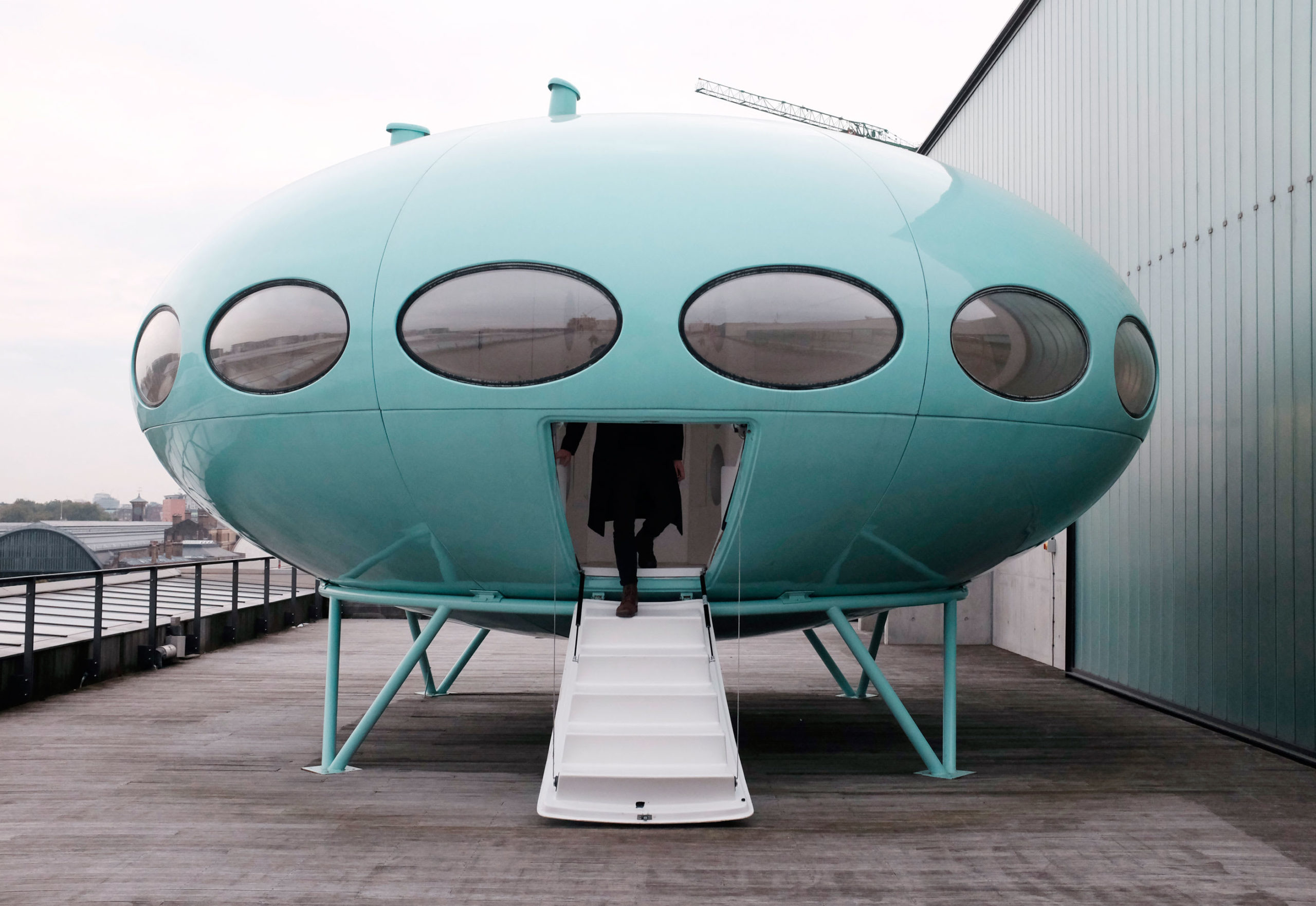FUTURO HOUSES
There are some things that will never go out of fashion, and one of them is Space Age design and its futuristic thang. We can’t be sure if it comes from the future, the past or from Mars, but either way it is a visual experience that transports us to another reality and opens the doors to distinct ways of living. The prefabricated “Futuro House” by Finnish architect Matti Suuronen was conceived as a holiday home or a “portable” ski cabin because of its heat efficiency and insulation. Easy to transport and assemble in almost any landscape, only 100 Futuro Houses were built between the 1960s and 1970s. But what happened to them, where are they and is there life on other planets? For the moment you can live in a Futuro House on Planet Earth, without having aliens as neighbours.

A design identifiable with both the future and the past.
A lightweight structure made of fibreglass-reinforced polyester plastic. Four adaptable stilt legs with a 20-degree incline to help it bed down in difficult terrain. Add all these together and you get a house that is so light that it could be airlifted into place by helicopter. It was easy to assemble, adaptable to all types of terrain, removing the need for grading and excavation before relocation, and furnished with a specially created design. 50 m 2 in an open floor plan with living room, dining room, kitchen, bathroom and private bedroom. You may wonder where you can find this perfect refuge for your mountain getaway: Well, of the almost 100 designed by the Finn, onlu half remain, spread out across the world in the U.S.A, Australia, France, Finland and Denmark. Of course, if you want one, you’ll have to drop some serious cash because they’re highly-prized and are considered la crème de la crème of Space Age architecture. Models 001 and 002 are displayed in Museum Boijmans Van Beuningen in Rotterdam and the WeeGee Exhibition Centre in Espoo (Finland).


In 1968, Kubrick’s classic movie “2001: A Space Odyssey” was released and it was no coincidence that in the same year the Futuro Corporation began production. A year later, Neil Armstrong set foot on the moon. The Futuro Houses represented science fiction iconography brought to life. The future was already here. The houses quickly became popular and participated in the Lüdenscheid exhibition (Germany) in 1971, together with other “Houses of the Future” such as the Rondo House (1960) by Casoni + Casoni or the Six-Shell Bubble House (1964) by Jean-Benjamin Maneval.
Futuro Houses have appeared on all kinds of merchandising: album covers (“Fine Line” by Harry Styles emulates the inside of a Futuro) comic strips such as Bill Griffith’s “Zippy The Pinhead” or brand advertisements for clothing brands such as Diesel’s 2010 ad that read: “We’re with stupid” while an Indian stalked the “Futuro” from the outside with a bow.

Suuronen thought it was an ideal solution to the housing shortages of the time due to its low production cost and adaptability. I still can’t believe why these amazingly cool houses didn’t capture people’s imagination. Production ended in 1973 when the price of plastic went through the roof due to the oil crisis, making them far too to expensive to manufacture and buy. The story continued in Ibiza’s love affair with the 70s, with the construction of two “UFO Houses” very similar to Suuronen’s. The constructor was called Antonio Noguera Marí and his great-niece is Ángeles Blanes Noguera – also known on the island as DJ Lost Angeles (one of Concept’s friends and a long-time collaborator with Rock Nights). Ángeles told us that her great uncle was quite the character who built two flying saucer houses in the late 70s in Cala Martina, Santa Eulalia. A couple from Murcia bought one of them and spent their summers there with their daughter.
There is no trace of them anymore as they were demolished in the late 80s, but who knows, maybe in Concept we’ll come up with something similar.
